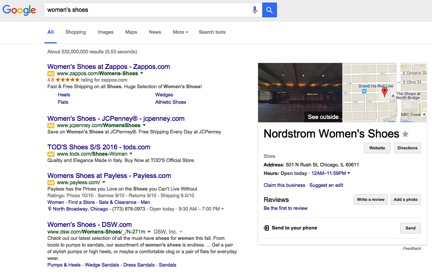
Google has a preoccupation with the mobile web.
Of course, this isn’t really news considering last year’s gargantuan lead-up to “Mobilegeddon” and the search engine’s preference for responsive, mobile-friendly website design.
Not even a year later, Google has two new announcements regarding the mobile web experience.
You Put Your Right Side Out
First, Google deleted ads on the right side of its search engine results pages on desktop machines. Instead, users see four ads at the top of the page, above the organic results, as well as three ads at the bottom of the page, similar to the mobile web.
This change confirms Google’s obsession with making the desktop experience more like mobile. As users now spend more time on mobile than on desktop, Google wants to streamline the experience across all devices.
If you are thinking this makes advertising with Google more competitive, you are correct. With the right side ads eliminated, cost-per-click is going up and the ad space on search is getting smaller. We recommend advertisers review quality scores and other influences on AdWords.
It is important to note this change does not affect Product Listing Ads (PLAs), which will continue to display on the right side of the page.
Now the Mobile Web is Faster
The second announcement is Google’s AMP, which stands for Accelerated Mobile Pages.
AMP is a project Google spearheaded with several other technology heavyweights to help mobile content load faster on devices. It is the solution to slow loading content on smartphones and tablets – and other emerging mobile devices. How fast? Jon Parise, software engineer at Pinterest, claims, “AMP pages load four times faster and use eight times less data than traditional mobile-optimized pages.”
And like the mobile-friendly changes last year, Google is giving preference to AMP pages in its search results. Currently, AMP content sits at the top of search engine results pages, ahead of everything else. You may be able to see where our heads are at already; AMP gives content an advantage in terms of SEO.
If you are thinking, “How can I get AMP for my own website?” it is possible. However, it’s currently the best fit for websites with huge amounts of content, which is why publishers like The Washington Post and The New York Times have already integrated AMP on its sites.
We will be keeping an eye on the evolution of AMP and its implications for mobile sites. Stay tuned for details!



